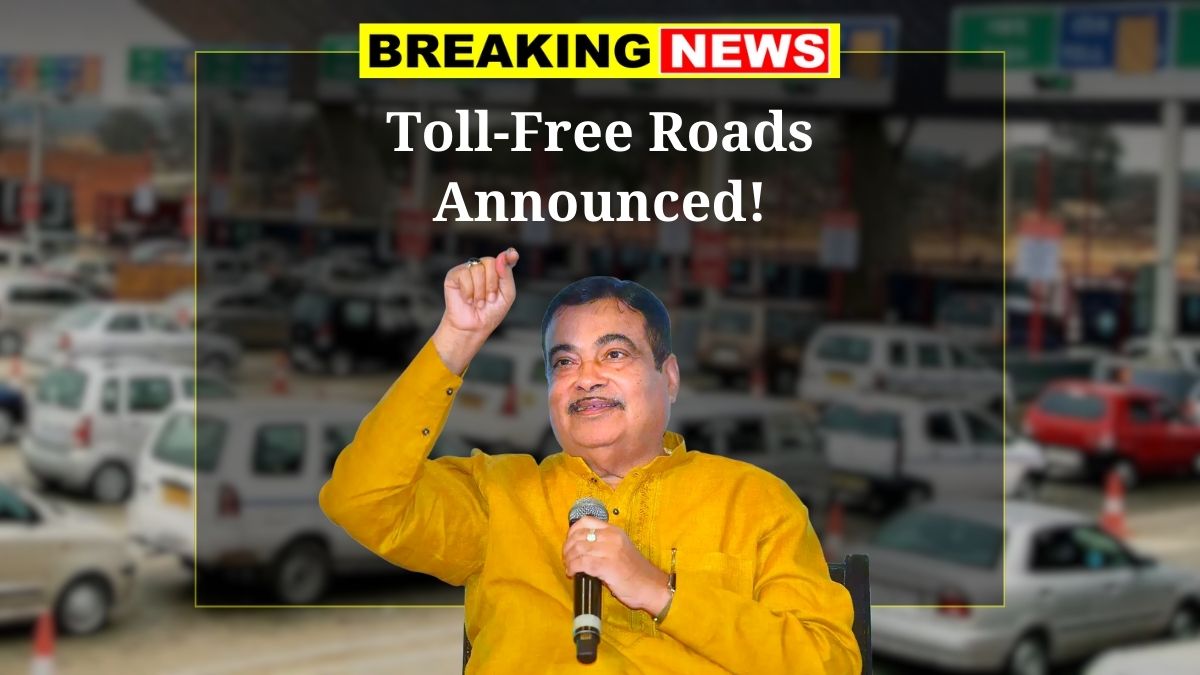Toll Charges Removed : If you’ve ever been stuck in a long queue at a toll plaza or groaned at yet another toll charge on your daily route — good news is coming your way.
Starting in 2025, the Ministry of Road Transport and Highways is rolling out a massive toll-free initiative that’s set to make travel more affordable, faster, and a lot less frustrating for millions of commuters and transporters.
What’s the Big News?
In a move that has been widely appreciated by citizens and the logistics sector alike, the government has announced that over 120 national and state highways will go toll-free starting next year. The aim? To cut down travel costs, reduce long waits at toll booths, and improve the overall traffic flow, especially in high-density areas.
According to a recent update from the Road Transport Ministry, this decision is not only about making road travel easier — it’s about supporting economic activity by making transport more efficient.
Key Toll-Free Routes You Should Know About
Here’s a breakdown of some of the major routes that are set to become toll-free:
- Delhi-NCR Region: Big win for daily commuters — stretches like the Gurugram-Sohna Road and parts of the Eastern Peripheral Expressway will now be toll-free.
- Maharashtra: Expect relief while traveling between Mumbai, Navi Mumbai, and Thane, with some major routes in this corridor now toll-free.
- South India: Highways running through Tamil Nadu, Karnataka, and Kerala, especially those connecting to Tier-2 and Tier-3 cities, will now enjoy toll-free status.
- Northern States: Roads within Punjab, Haryana, and Uttar Pradesh have been included too, especially internal road networks between major cities for seamless intercity travel.
- Industrial Corridors: Selected stretches of the Delhi-Mumbai Industrial Corridor (DMIC) will be toll-free to support faster and cheaper movement of goods.
Why This Move Matters
There are a few key reasons behind this big decision:
- It reduces transport costs for businesses, small traders, and logistics players — especially those who rely on road transport every day.
- Time saved = money saved. With fewer toll stops, there’s less idling, less fuel burned, and fewer vehicle emissions.
- The move also comes in response to public pushback against excessive toll charges, which had become a pain point for daily and long-distance travelers alike.
Speaking on the decision, Transport Minister Nitin Gadkari said, “We are committed to making transport affordable and efficient for all. The toll abolition on highly busy roads is a major step towards that goal.”
But Wait — Not All Roads Are Toll-Free
While many major roads are getting this benefit, premium expressways and high-maintenance highways will still charge tolls. These include newly built expressways where toll collections are required to recover investment and fund upkeep. To check if your regular route is covered, you can visit the NHAI website or your state transport portal for the full list of toll-free routes.
The Bottom Line
The 2025 Toll-Free Travel Program is set to change the way India travels. Whether you’re a daily office commuter, a long-distance truck driver, or a small business owner moving goods — this is a win. Cheaper, smoother, and faster travel is now on the horizon.




